Spain
Things to DO
Sierra Nevada
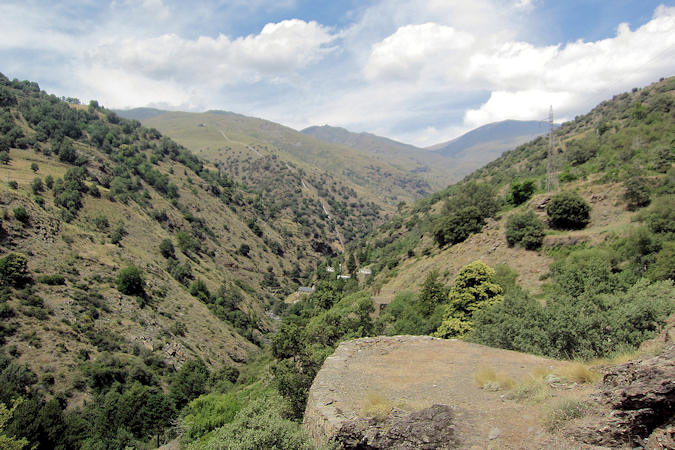 |
|||||
The Sierra Nevada (meaning "snowy range" in Spanish) is a mountain range in the region of Andalucia and it contains the
highest point of continental Spain, Mulhacén at 3.478 metres above sea level. It is a popular tourist destination, as its high
peaks make skiing possible in one of Europe's most southerly ski resorts, in an area along the Mediterranean Sea predominantly known
for its warm temperatures and abundant sunshine.
Pico del Veleta is the second highest peak in the Sierra Nevada. Its height is given variously as 3.394 metres and the
northern slopes are home to the Sierra Nevada Ski Station.
By far the main attraction for visitors to the station is the 105 km of alpine skiing runs. With abundant snow, it is possible to
ski almost anywhere on the mountain, as the whole station is above the tree line.
Summer activities include walking, cycling, horse-riding, and mountain climbing in the area. One of the cable cars and one chairlift
are kept open in July and August, making it relatively easy for hikers to reach the summit of Veleta.
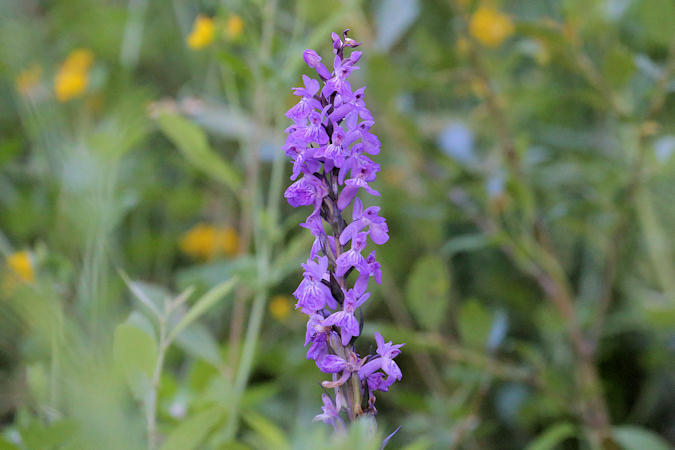 |
|||||
Due to its isolated location in the far south of Europe, the flora and fauna of the Sierra Nevada are unique. During the last ice age,
species moved south to escape the colder climate in the north, and as the climate grew warmer again, these species survived by taking
refuge in the mountains.
Parts of the range have therefore been included in the Sierra Nevada National Park which was founded on 14 January 1999
Flora
The park's plants are outstanding, with the highest number of endemic plant species in Europe. An impressive 2.100 different species of
vascular plant, a quarter of those recorded in the whole of Spain, have been registered here, over 120 of them endangered. Around 70 plant
species are only found in the Sierra Nevada, mainly in the higher areas, while 175 species are native to the Iberian Peninsula.
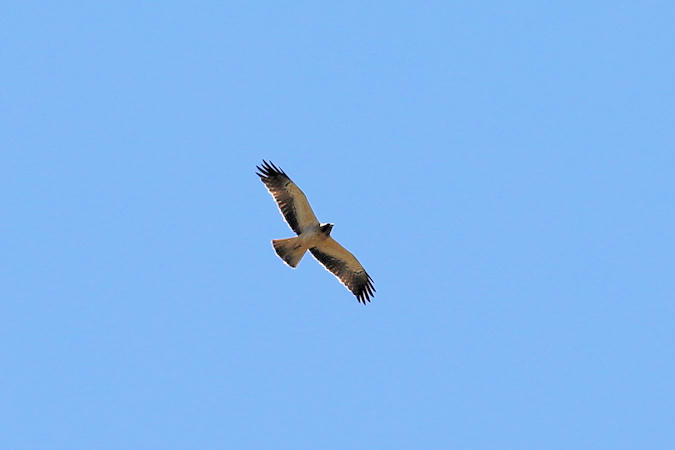 |
|||||
Fauna
The park's main draw for fauna is its rich birdlife, with over 60 species inhabiting the Sierra. Nesting birds of prey include
Booted Eagles, Bonelli's Eagles, Peregrine Falcons and Griffon Vultures. On the higher slopes are Alpine Accentors, Black Redstarts
and Rock Thrushes. In the woodland areas are Hoopoes, Short-toed Treecreepers and Golden Orioles.
The most commonly seen mammal by far is the Spanish Ibex, a type of mountain goat with distinctive curling horns.
The park is renowned for its outstanding variety of butterflies with 120 species recorded here, like the Apollo butterfly.
Other important invertebrate species are the 37 native species of beetle, including the rare endemic rhinoceros beetle and the
flightless grasshopper Eumigus rubioi.
Reptiles and amphibians include Ladder Snakes, Southern Smooth Snakes, Ocellated Lizards and Natterkack Toads.
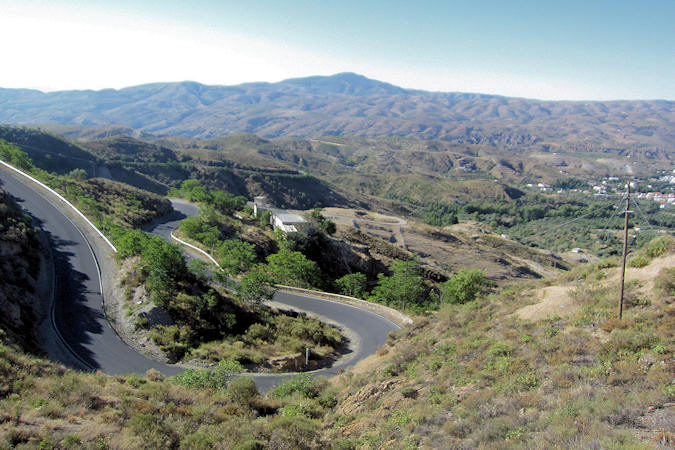 |
|||||
Located in the less well known area of the Sierra Nevada Mountains, between the provinces of Granada and Almería, Puerto de
la Ragua is a mountain pass (2.041 m) between two very different regions that have maintained their customs, traditions and lifestyle
over the centuries. Just 15 km to the south you will find all the Moorish charm of the Alpujarra region and to the the north, the
stately majesty of the Marquesado del Zenete plateau.
Looming over the village of La Calahorra and the plateau of the Marquesado is one of Andalucia's most emblematic and unusual
fortresses, the haunting Castillo de La Calahorra. One of the first Italian Renaissance castles outside Italy and the first in
Andalucia displaying these architectural features, it was constructed between 1509 and 1512 on the site of a former Moorish fortification.
Jaca
Jaca is a city of northeastern Spain in the province of Huesca, located near the Pyrenees and the border with France. Jaca is an ancient fort on the Aragón River, situated at the crossing of two great early medieval routes, one from Toulouse to Santiago de Compostela and Pau to Zaragoza. Jaca was the city out of which the County and Kingdom of Aragon developed.
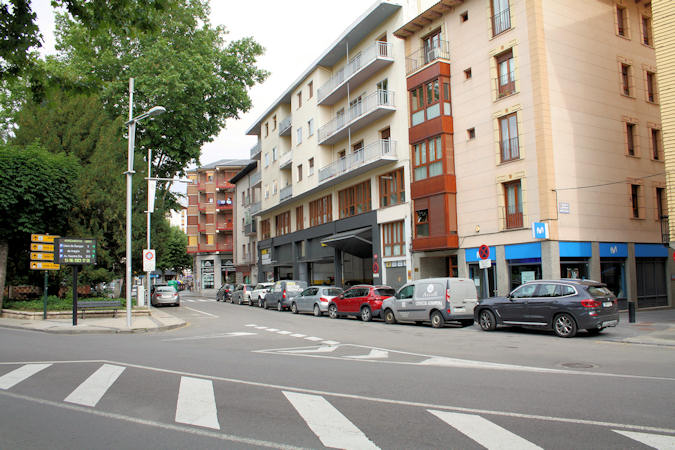 |
|||||
San Pedro Castle, also known as the "citadel of Jaca", was built between the 16th and 17th centuries
on the orders of King Philip II, as a part of the defensive strategy against France, preventing the passage of the
Huguenots through the Pyrenees, and restored in 1968.
The engineer Tiburzio Spannocchi followed the canons of military architecture derived from the use of artillery, and it
is today the only fortress in the world in this style of construction still standing. It has a pentagonal floor plan with a
bastion in the form of an arrow at each corner, and a moat that today serves as a resting place for deer.
Its drawbridge leads onto the parade ground, around which are arranged the various barracks.
One of the Citadel barracks houses the Museum of Military Miniatures. Its rooms house a collection of more than 35.000
lead figures that are exhibited in 23 thematic settings that recreate unique battles in the history of humanity. There is also a
room dedicated to the army’s mountain units, as well as a temporary exhibition room.
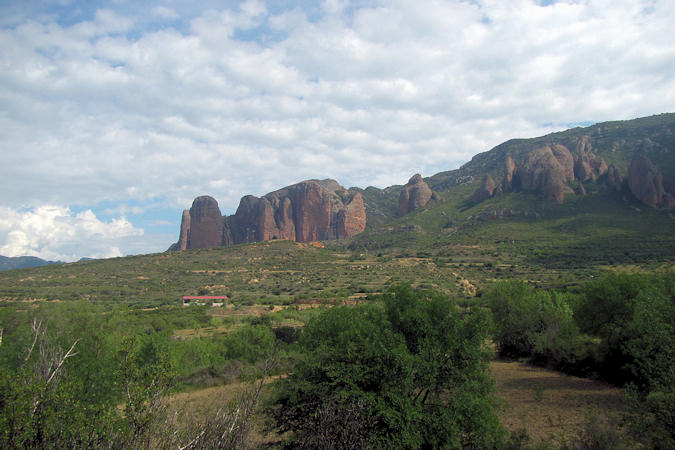 |
|||||
The Mallos de Riglos are a set of conglomerate rock formations, located some 30 km south of Jaca. Rising to some
300 metres high, they form part of the foothills of the Pyrenees.
The Mallos were formed when eroded material washed down from the slopes of the Pyrenees and became cemented together by limestone.
Over time, this mixture became compacted into a large mass of conglomerate rock. Eventually, erosion wore away the softer,
more porous parts of the conglomerate. The more resistant rock remained, and became the formations known as the Mallos de Riglos.
About 55 km south-east of Jacca is a rock formation valled Salto de Roldán.
A wide variety of bird species can be seen on and around Salto de Roldán. The eagles and vultures will use the thermals above the
crags to gain height to sight prey; and in the case of the bearded vulture, to drop large animal bones onto rocks to break them
open so that they can feed on the marrow.
San Juan de la Peña monastery
The authentic origins of the monastery are lost in the darkness of time, but historical documents tell us that a small
monastic centre devoted to San Julian and Santa Basilisa was founded in this place in 920.
The old monastic centre was ruined around the end of the 10th century, but it was refunded by Sancho III the Great,
king of Navarra, in the first third of the 11th century as part of the Benedictine Order.
As the kingdom of Aragon was born with the nearby town of Jaca as its capital San Juan de la Peña became one of the most important
monasteries in Spain. Nobles and royalty gave donations to the monastery in exchange for being buried there and having the monks
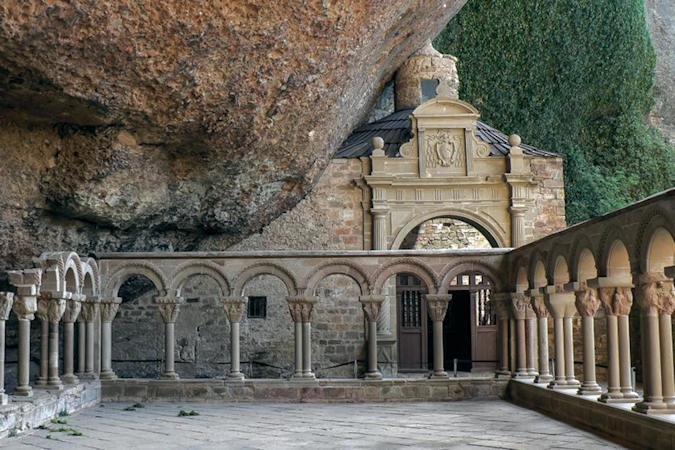 |
|||||
say prayers for them to save their souls from purgatory.
In the 17th century there were a series of fires in the monastery and finally in 1675 after a particularly serious fire the old
monastery was abandoned and the monks constructed a new monastery just above in the meadow known as Llano de San Indalecio.
This was a much more hospitable spot – drier and warmer than the damp dark almost cavelike location of the old monastery.
The new monastery was sacked by French forces during the War of Independence (1807-1814). The monastery was severely damaged
but continued to be inhabited by monks until 1835 when the site was finally abandoned.
Currently, the Nuevo Monastery houses a hostelry and also houses the Interpretation Center of the Kingdom of Aragon, with panels
and an audiovisual with the keys to the origin of the Kingdom and the Crown of Aragon.